How to run a Polkadot Validator Node on OnFinality
In this How-To Guide, you will learn how to set up your own Validator for Polkadot, which will enable you to start staking and earn rewards on the network. This guide should be used alongside the official Polkadot guide which is kept up to date and more detailed.

Introduction
In this How-To Guide, you will learn how to set up your own Validator for Polkadot, which will enable you to start staking and earn rewards on the network. This guide should be used alongside the official Polkadot guide which is kept up to date and more detailed.
Polkadot
Polkadot unites and secures a growing ecosystem of specialized blockchains called parachains. Apps and services on Polkadot can securely communicate across chains, forming the basis for a truly interoperable decentralized web.
Why Run A Validator For Polkadot
Validators secure the Polkadot Relay Chain by staking, validating proofs from collators and participating in consensus with other validators. This helps harden the codebase of Polkadot itself and also allows network participants to stack up some experience.
Useful Links


HOW TO SET UP A VALIDATOR
1. Log In To OnFinality
Create an account and log in to OnFinality, then add a payment method.
2. Create Dedicated Node
Select the Dedicated Nodes menu and press Deploy New Node
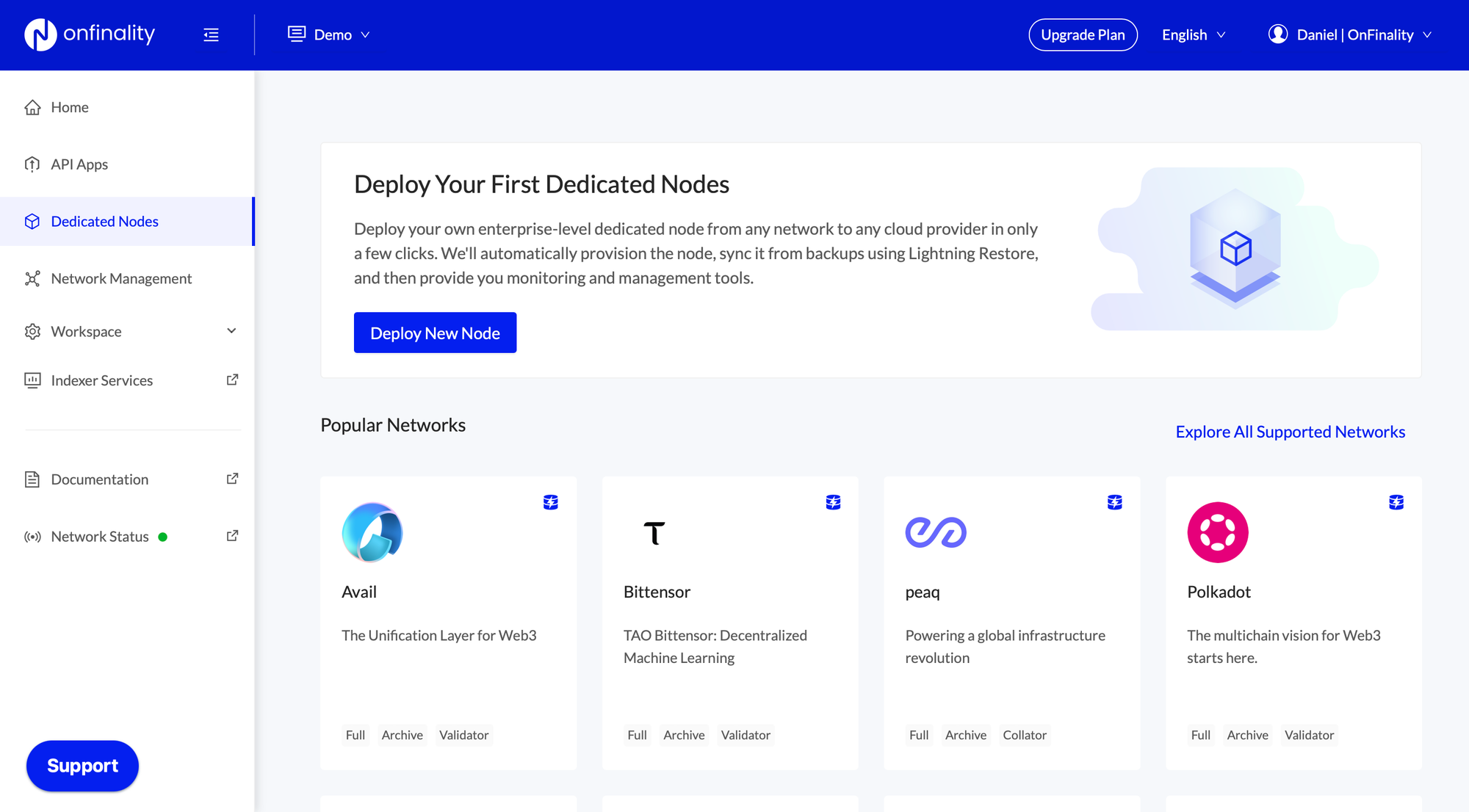
2.1 Select Network
Search for and then select the Polkadot network
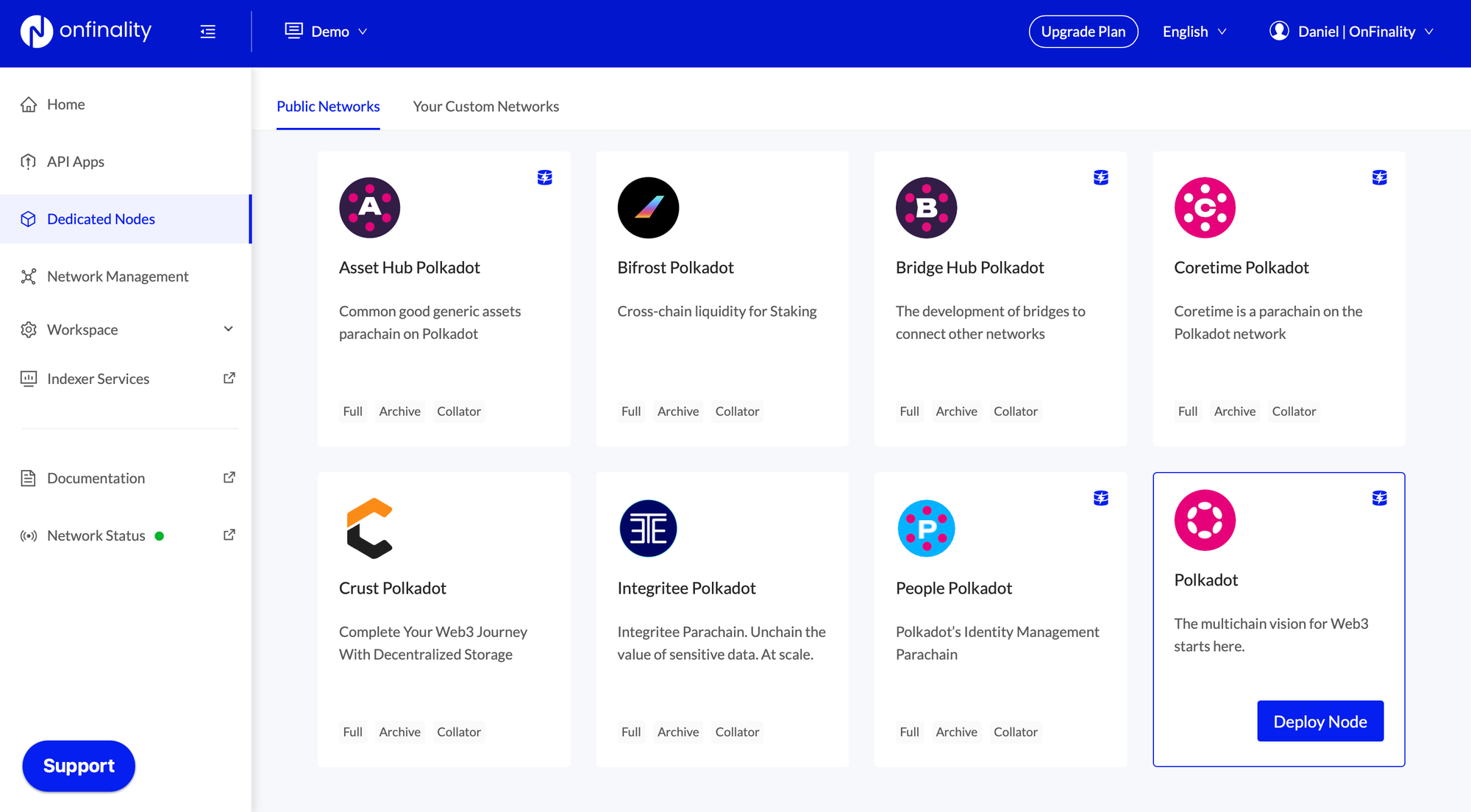
2.2 Configure Node
Enter an easily identifiable Display Name and select Node Type Validator. Select the latest Image Version
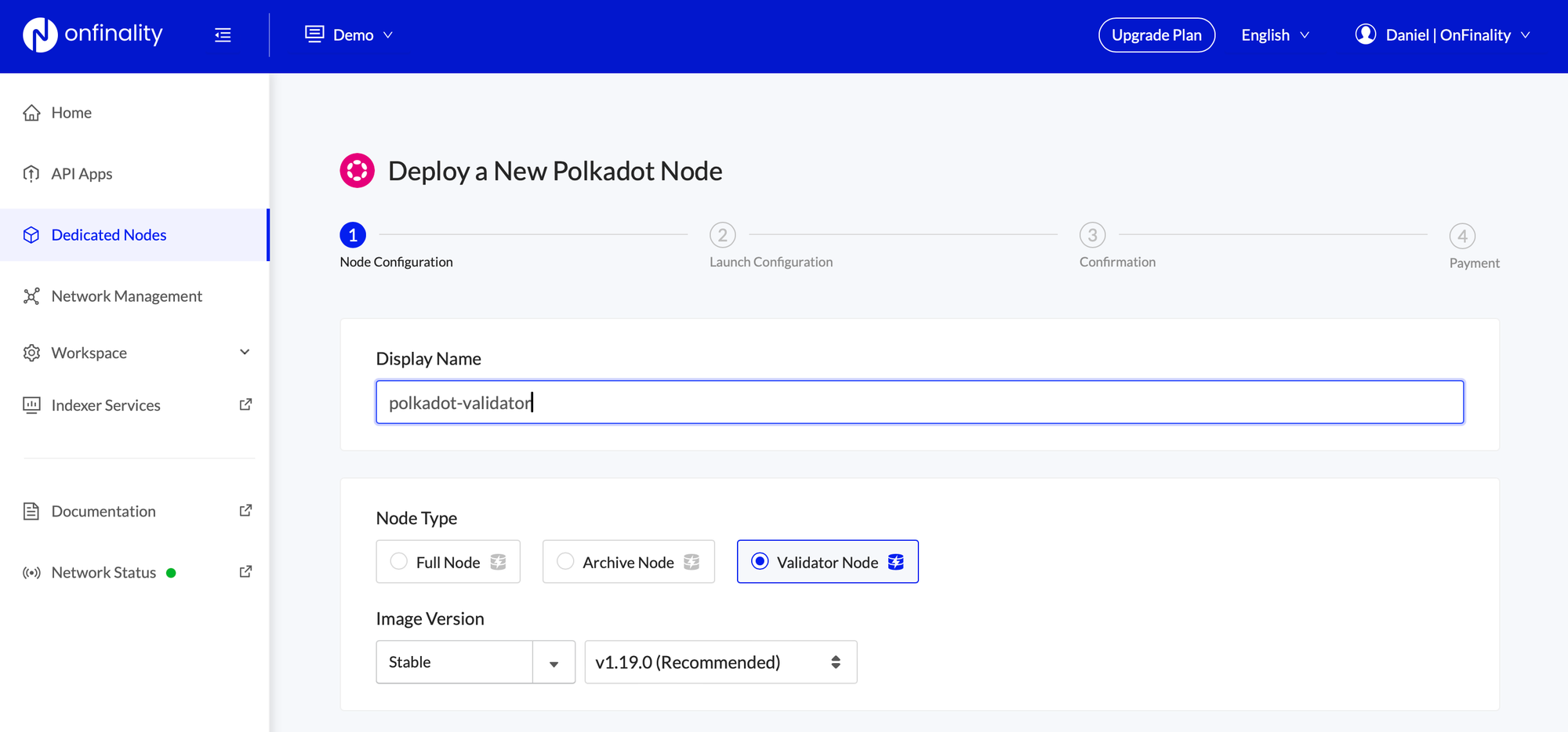
Scroll down to set the Cloud Provider and Region where you will run the node. Networks may have a preference of where you should run your validator or collator, so check with their official documentation.
Look out for the Lightning Restore indicator to get the node running as fast as possible.
Use at least the recommended configuration suggested by the network, then press Next
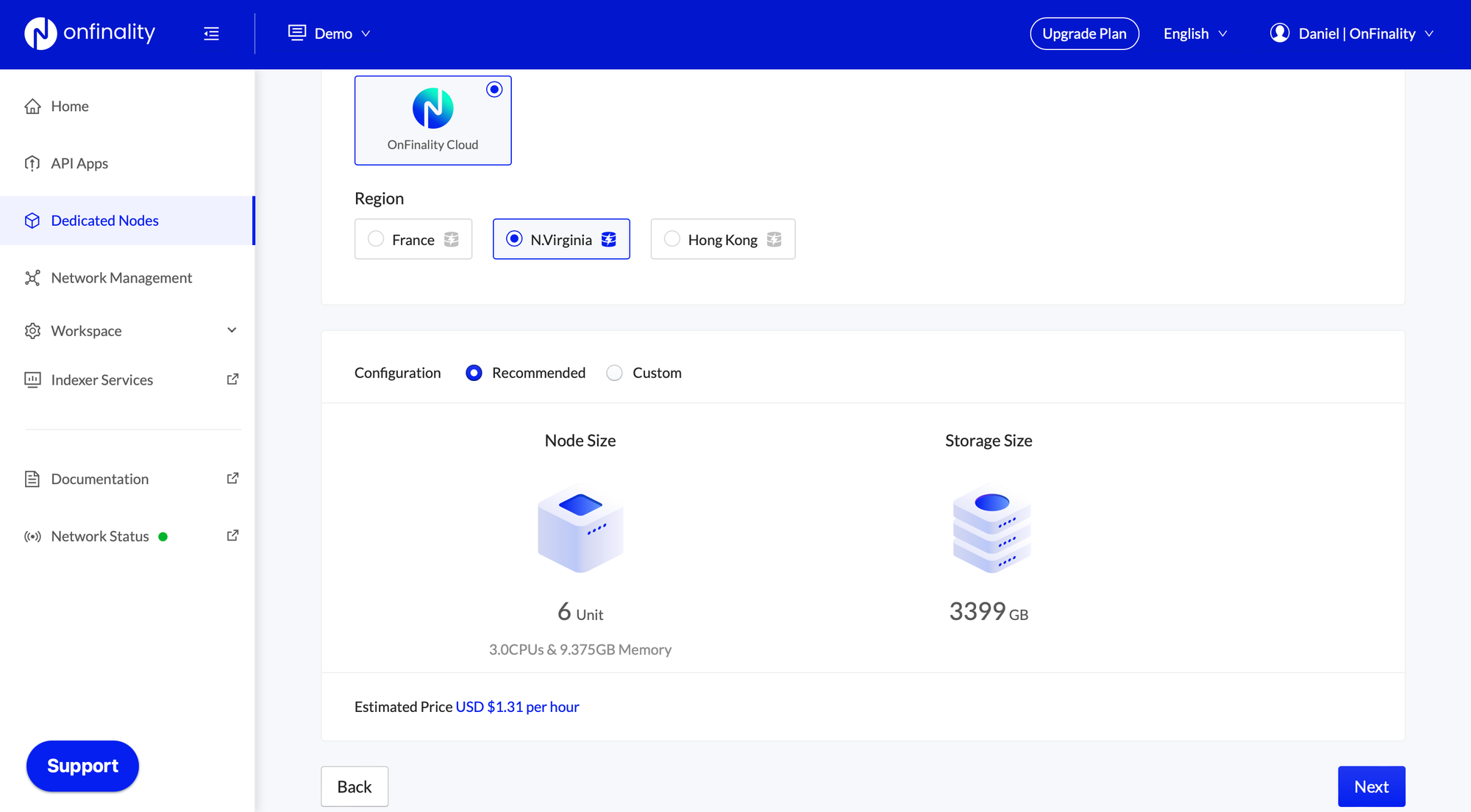
2.3 Configure Launch Arguments
Next, review the node’s Launch Configuration. The recommended settings are usually sufficient, but we recommend comparing with Kusama’s own documentation to be certain.
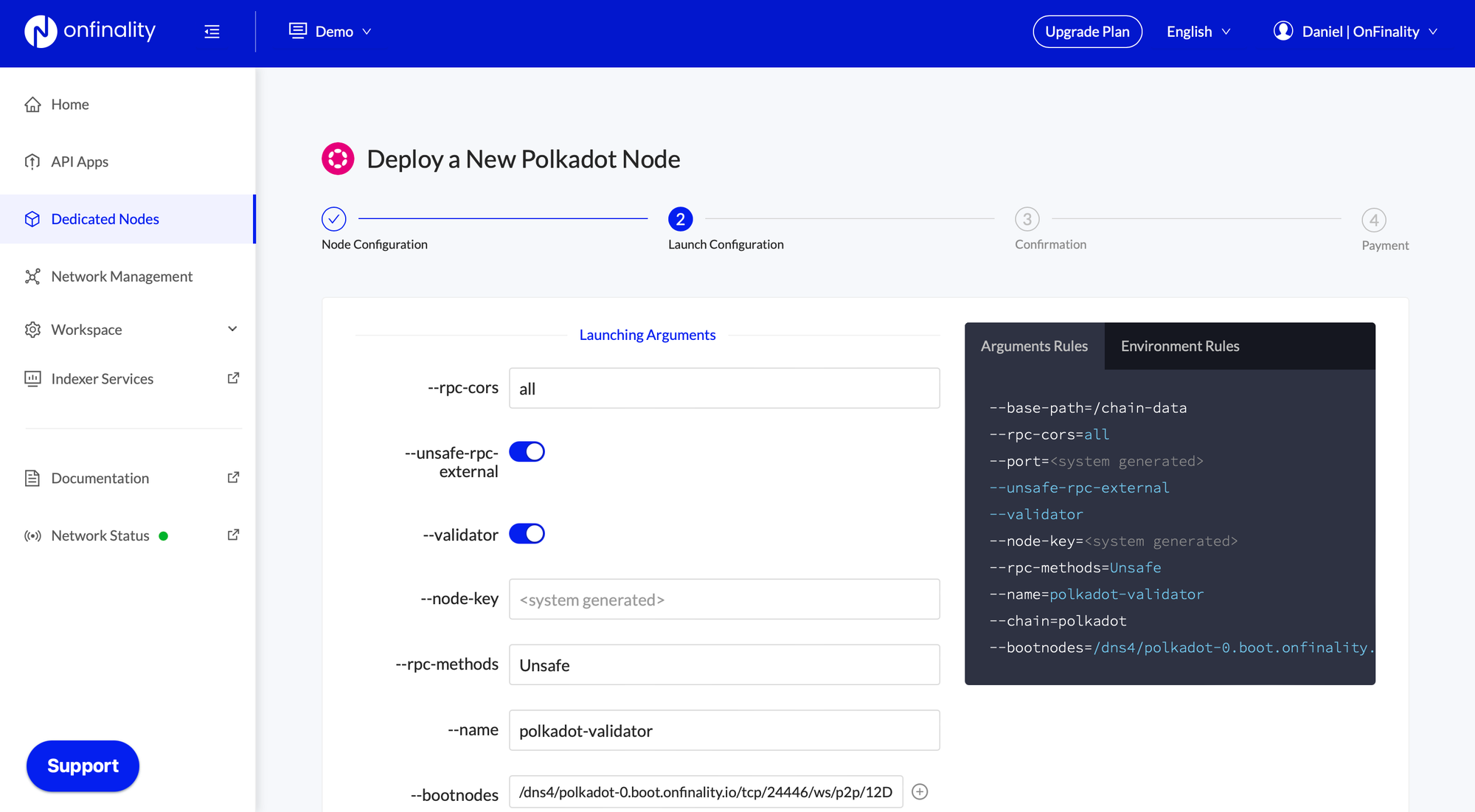
Press Next
2.4 Review Node
Finally, review the node’s settings and press Deploy Node
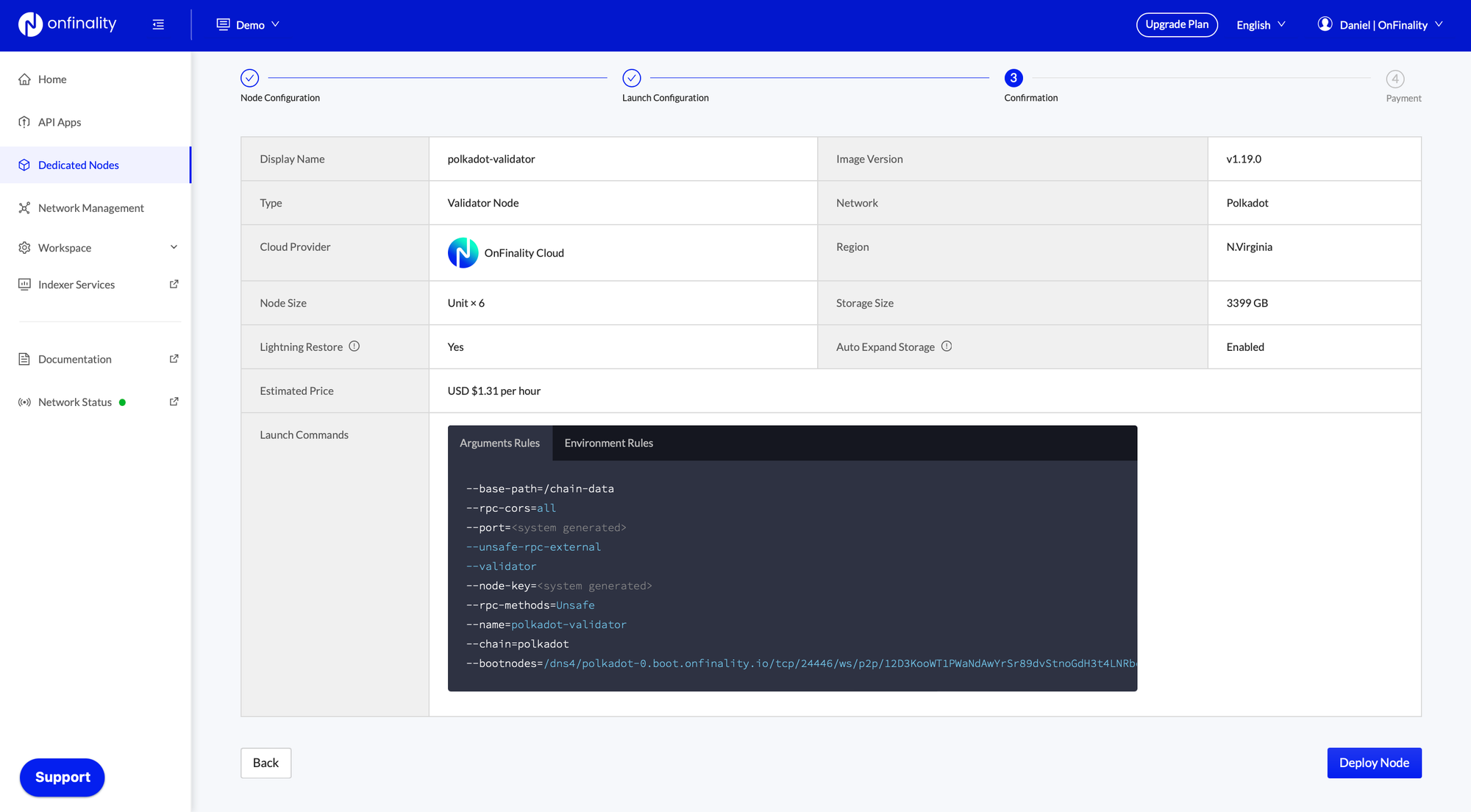
3. Sync Your Dedicated Node
Once your node is successfully deployed, you can find it in the “Dedicated Nodes” section on our portal. Click on your node and confirm the following:
- Relay chain/parachain blocks are syncing appropriately
- No configuration errors in the console log. You can find your console by clicking on “Console logs” on the top right hand.
- CPU, Memory, and Storage are within reasonable range of use.
You can cross-reference the respective network blocks on the PolkadotJS App.
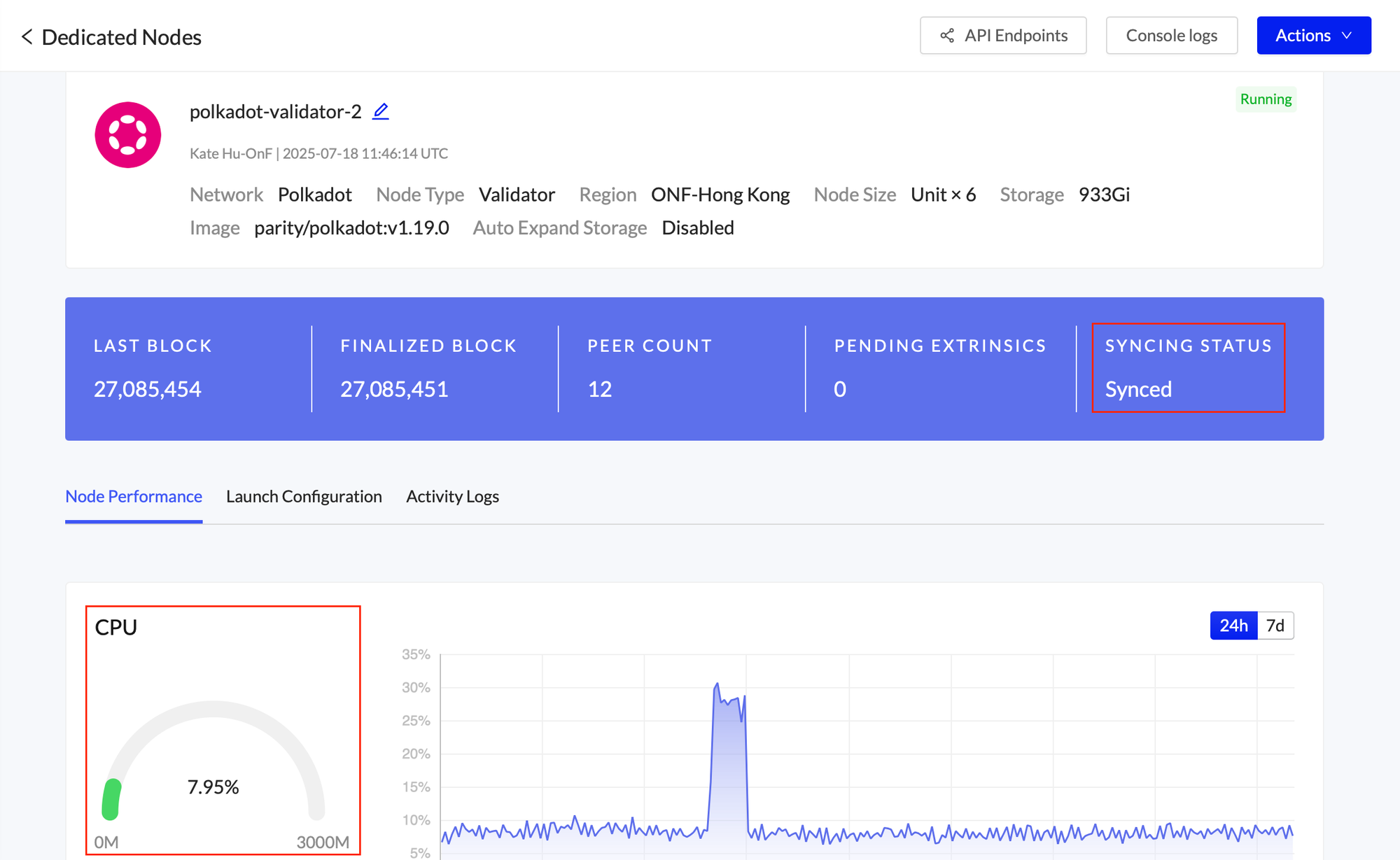
4. Generate Session Keys
Session keys are what links the validator or collator to your account.
First, locate your Dedicated Node’s RPC endpoints under API Endpoints. Access is secured by an API Key at the end of the URL, so keep it safe and private.
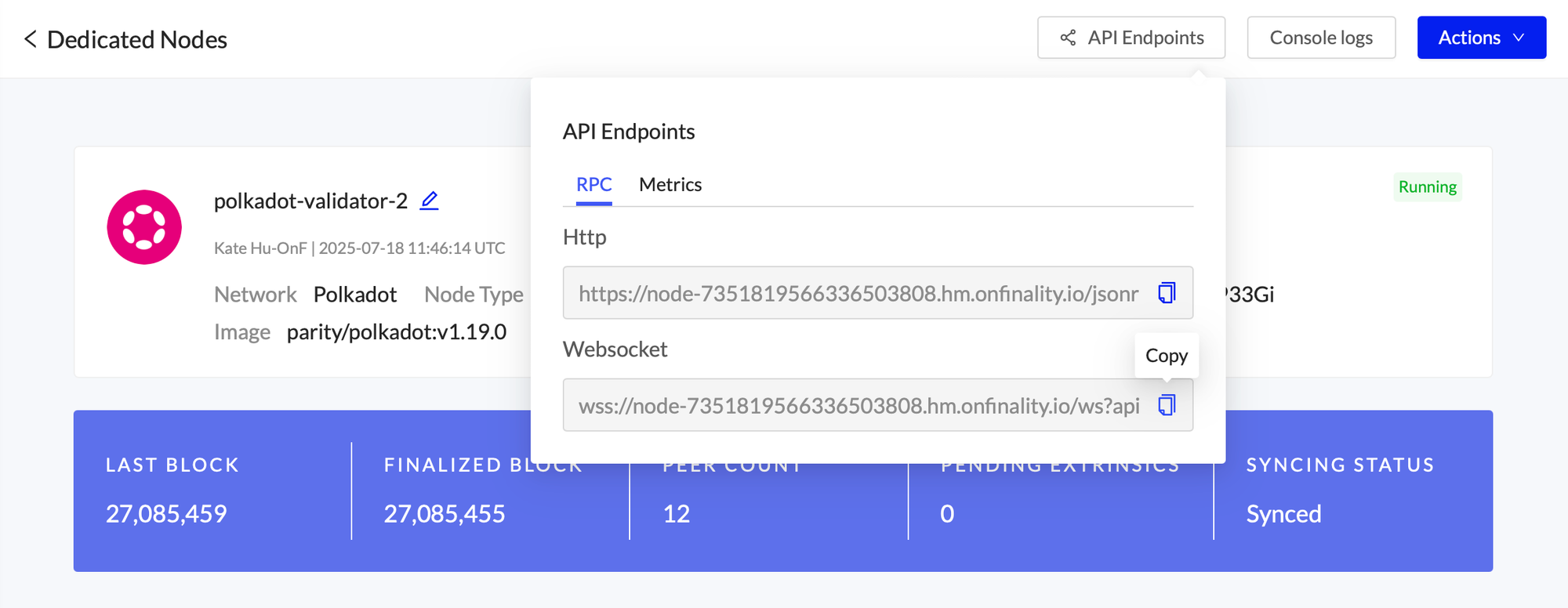
Option 1 — Polkadot-JS:
Copy your RPC — Websocket endpoint into the Polkadot-JS Custom Endpoint and press save to connect to the node
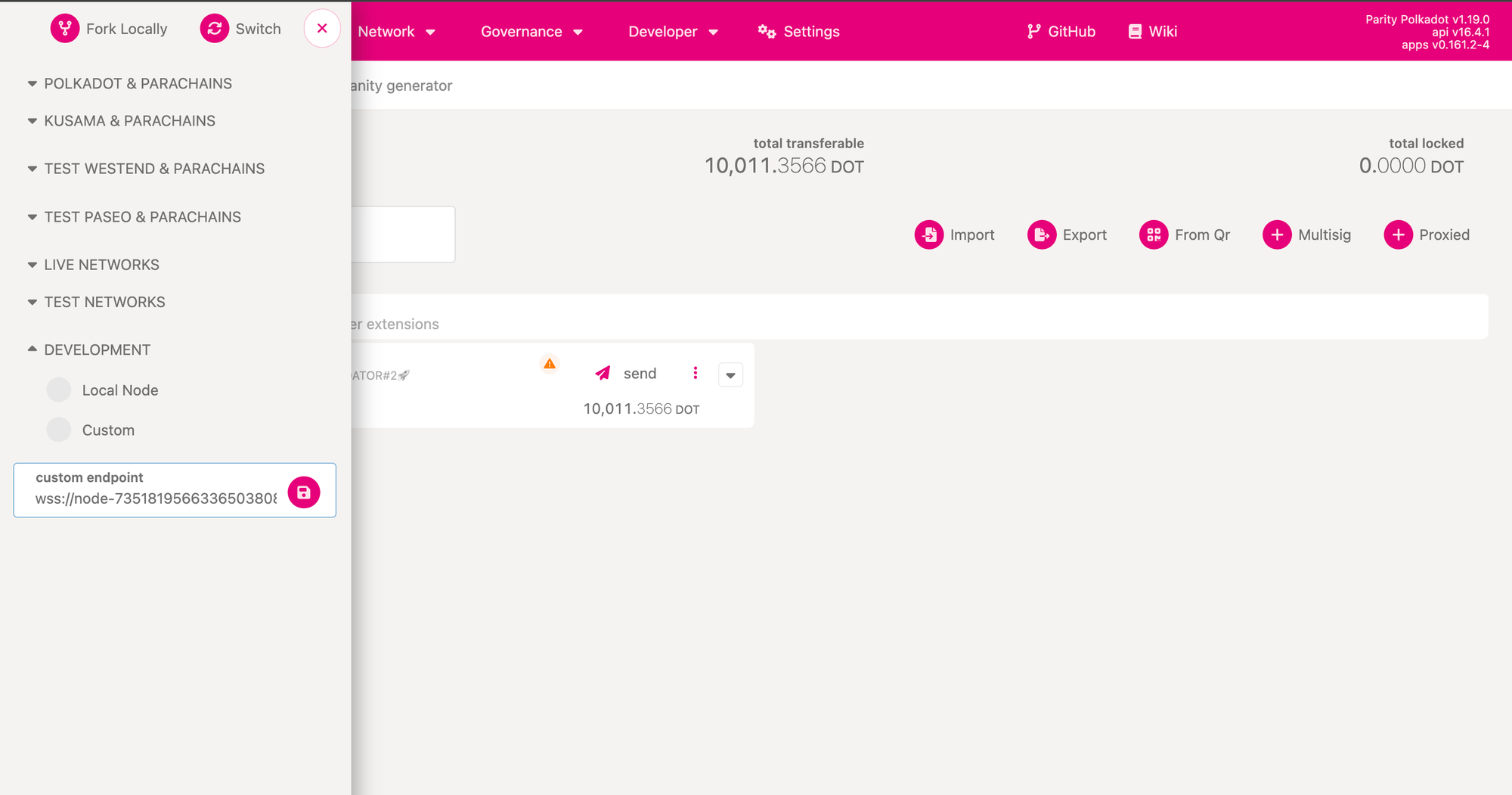
Navigate to Developer > RPC Calls and submit an author rotateKeys call.

Record the result.
Option 2 — CLI:
Generate the session keys on your Dedicated Node via the author_rotateKeys RPC Request, using your Dedicated Node’s RPC — Http url.
Example request
curl **Node's RPC Http endpoint here** -H \ "Content-Type:application/json;charset=utf-8" -d \
'{
"jsonrpc":"2.0",
"id":1,
"method":"author_rotateKeys",
"params": []
}'
You will get a response like this
{
"jsonrpc": "2.0",
"result":"0xc05a9d093e4db4c1bde31977716e7a0a39d6f3d1f1bf749e7fec8371147de730af6860aeef81a11130c9fcd317b96e736f6c36141c28f382a18f9faf6e7df797eaa951ead00d12db10937003f0956e3d3444d1774d452ed045dbc1b84d1bf1471abf5d77bf5033845f01be1188a852c6f0ba703042b4d06d14314841c1096c50",
"id":1
}
The content after "result" is the session keys of your validator node
5. Set Up Account and Stash
To run a validator, first you will need to set up your Polkadot Stash account and prepare enough DOT for the minimum bond.
In Polkadot.js open Network > Staking > Accounts menus press + Stash
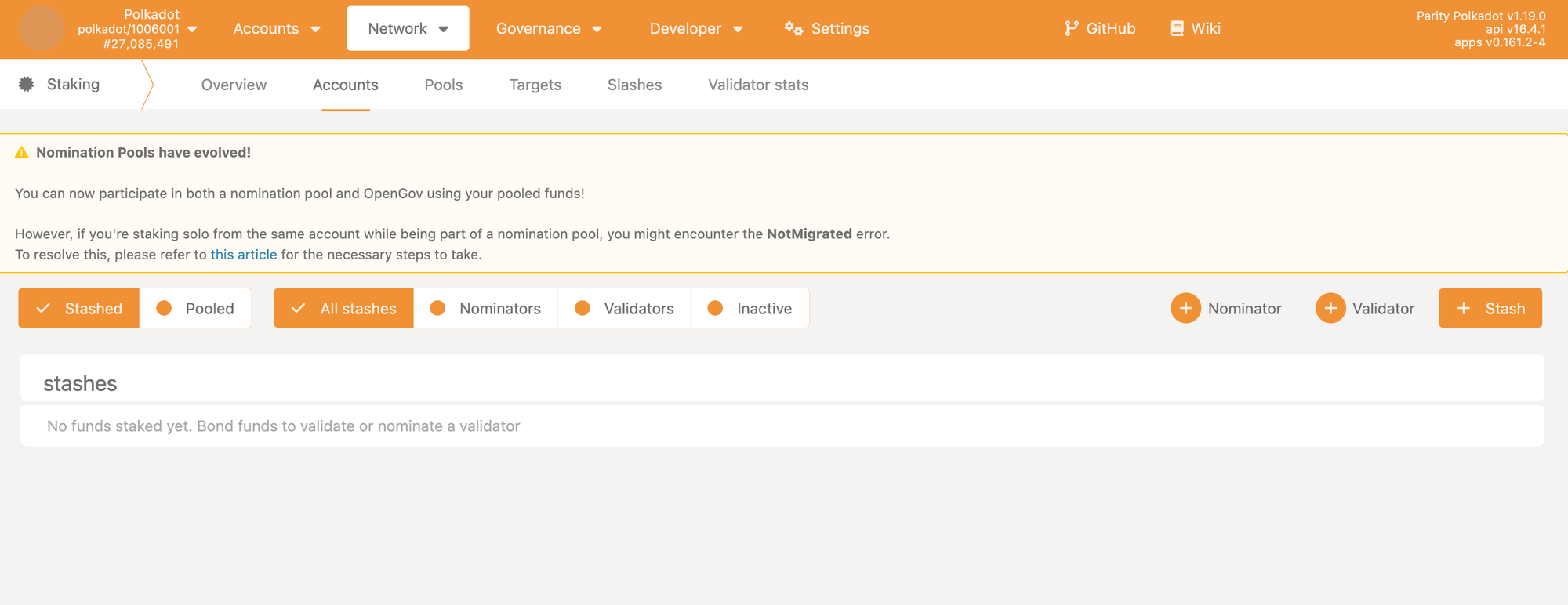
Enter the token value you wish to bond against your Validator as it’s stash, and the payment destination
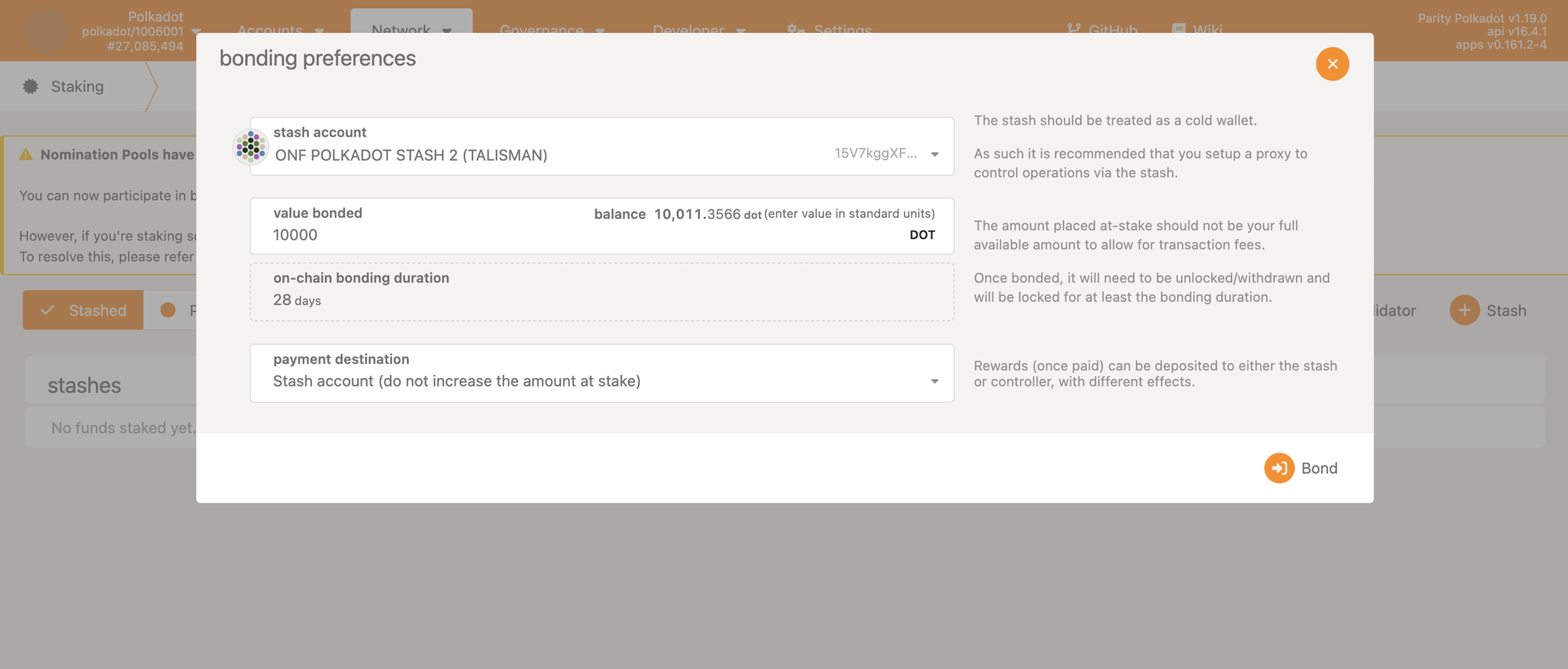
Press Bond
6. Set Session Keys
Next, you will need to link the session keys to your account on-chain using the response from author_rotateKeys.
Click Change Session Keys and enter the session keys from step 3
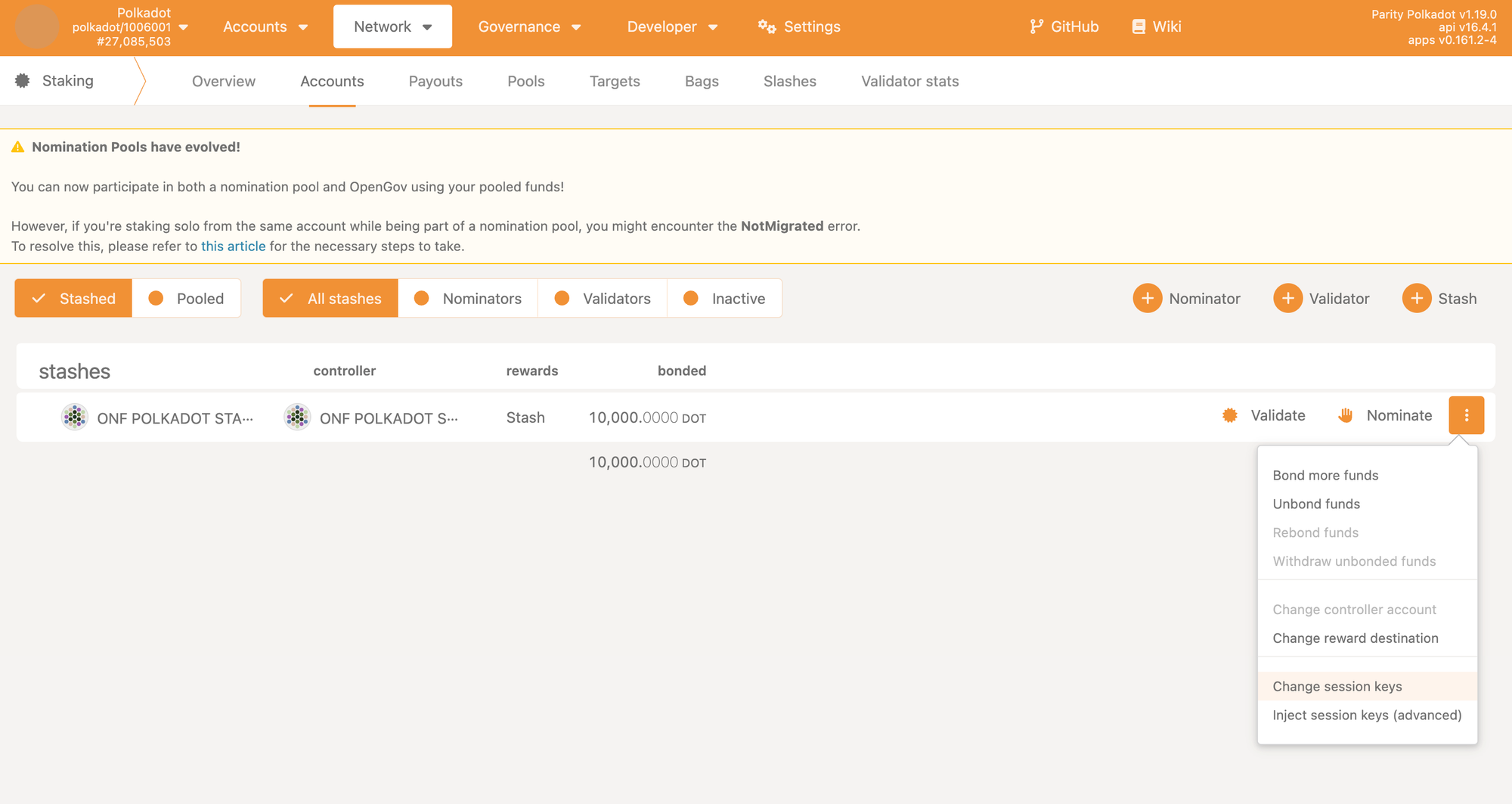

7. Configure Your Validator
Finally, you will need to configure your validator’s settings, such as the session keys, stake value, and commission, on chain.
Click Validate
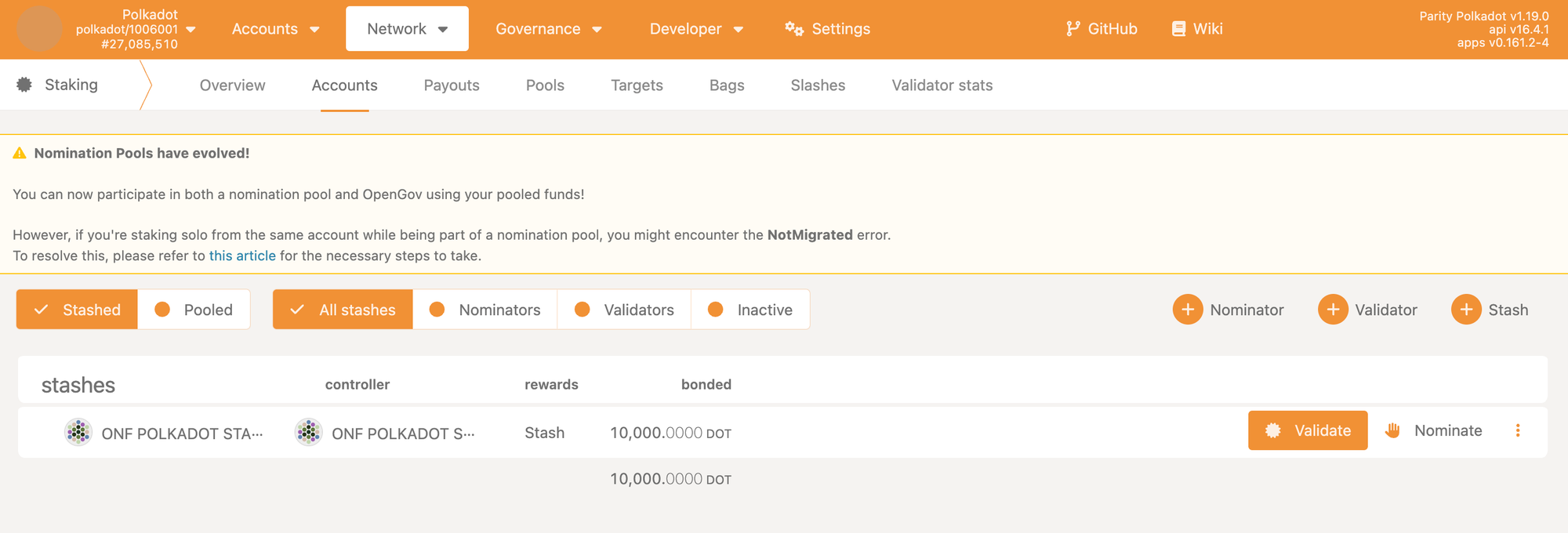
Set the value of reward commission percentage, which is the rate that your validator will be commissioned with. The remaining rewards will be split among your nominators.
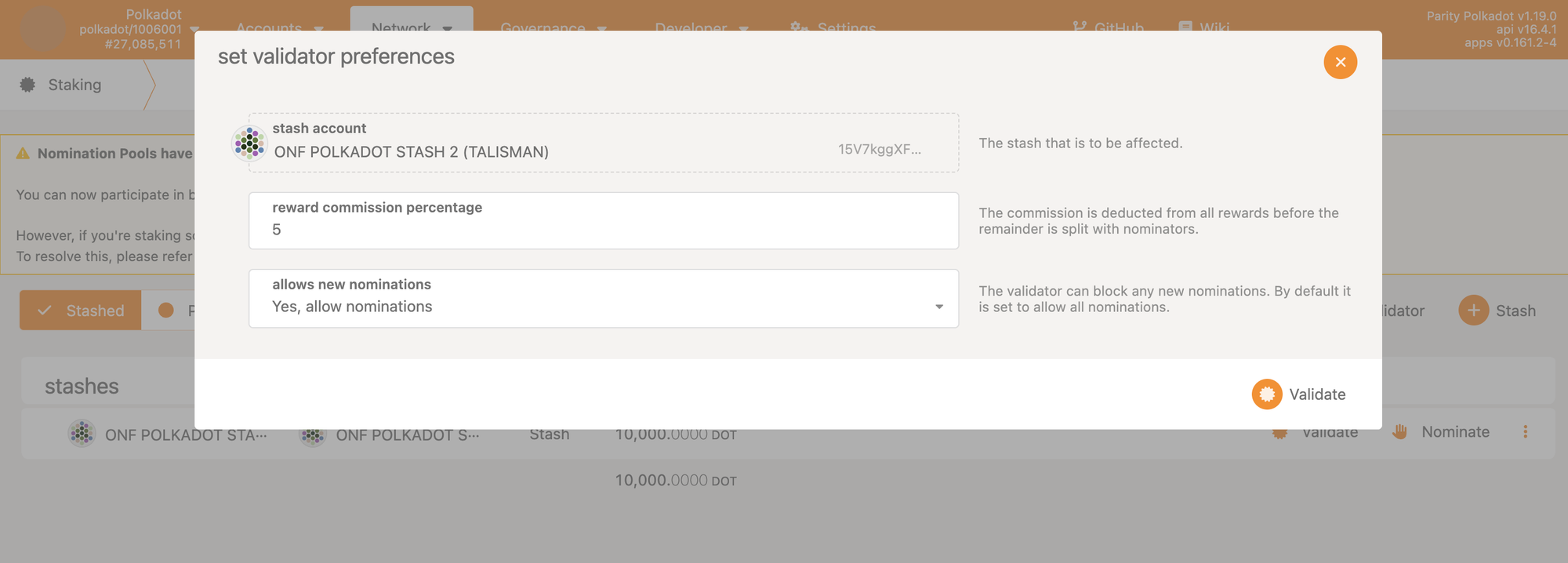
Choose whether to accept new nominations and click Validate
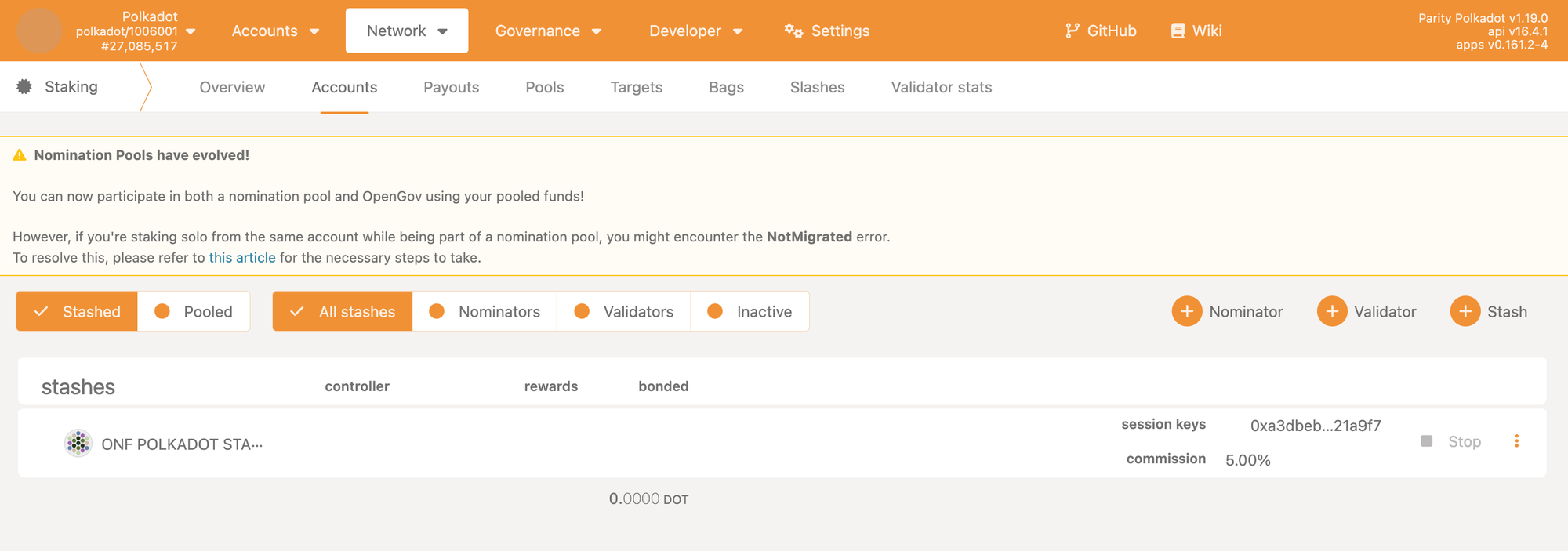
You should see your stash has the session keys and commission set.
The validator set is refreshed every era. In the next era, if there is a slot available and your node has enough stake to be selected to join the validator set, your node will become an active validator.
Congratulations
If you have followed all of these steps, and been selected to be a part of the validator set, you are now running a Polkadot validator!
Common Questions
How much do Polkadot Validators earn?
Polkadot validators earn rewards for securing the network. Earnings depend on factors such as the validator’s self-stake, commission rate, uptime, number of blocks validated, and the amount of DOT delegated by nominators. Rewards are typically distributed every era (about 24 hours).
What is blockchain stake?
Blockchain staking is the process of locking up tokens (like DOT) to help secure the network and validate transactions. In return, stakers receive rewards, making it similar to earning interest. On Polkadot, validators and nominators both stake DOT to participate in the network’s proof-of-stake consensus.
How can I improve my validator rewards?
You can increase rewards by maintaining high uptime, ensuring your validator node is well-synced and performant, keeping commission rates competitive, and attracting more nominators. Running your validator on reliable infrastructure, such as OnFinality’s dedicated nodes, helps reduce downtime and improves your chances of earning consistent rewards.
What is the minimum DOT required to run a validator?
The minimum bond to become a Polkadot validator changes dynamically depending on network conditions and competition for slots. It’s recommended to check the Polkadot staking dashboard for the most up-to-date requirement.
What’s the difference between validating and nominating?
Validators actively secure the network by producing blocks and verifying transactions, while nominators support validators by staking DOT with them. Both roles earn rewards, but running a validator requires more technical expertise and infrastructure compared to nominating.
About OnFinality
OnFinality is a blockchain infrastructure platform that saves web3 builders time and makes their lives easier. OnFinality delivers scalable API endpoints for the biggest blockchain networks and empowers developers to automatically test, deploy, scale and monitor their own blockchain nodes in minutes. To date, OnFinality has served over 265 billion RPC requests across 60 networks including Polkadot, Kusama, Moonbeam, Astar, Avalanche and Cosmos, and is continuously expanding these mission-critical services so developers can build the decentralised future, faster!


